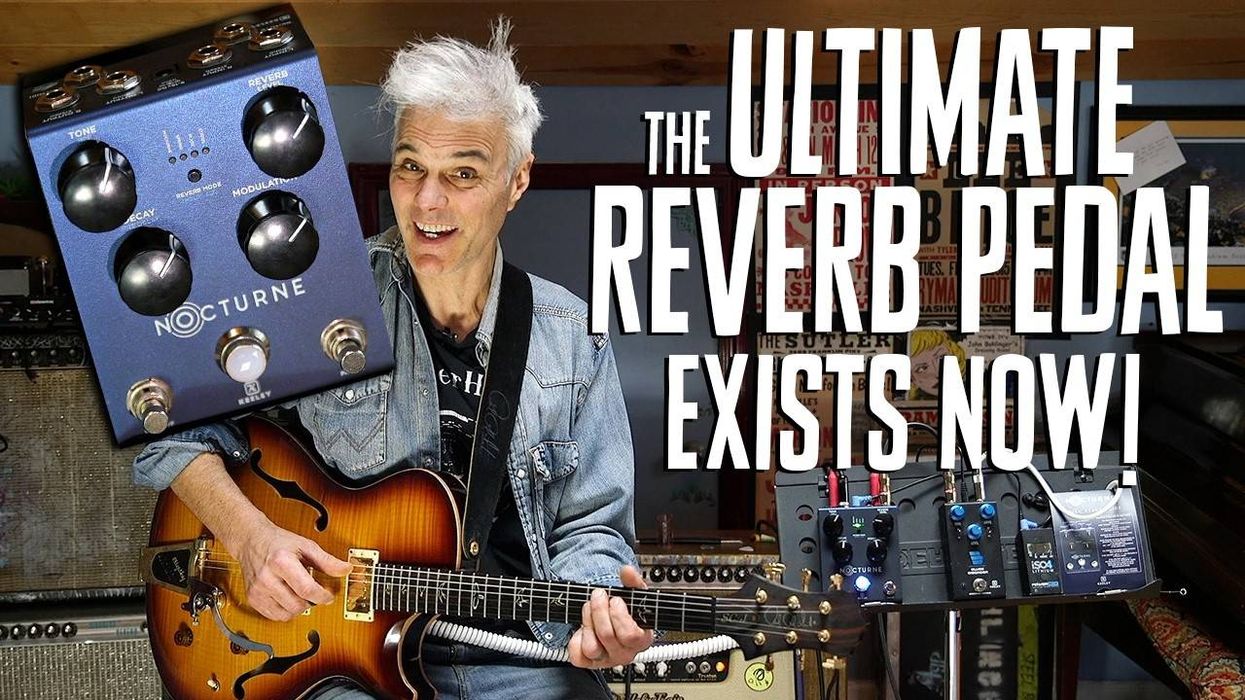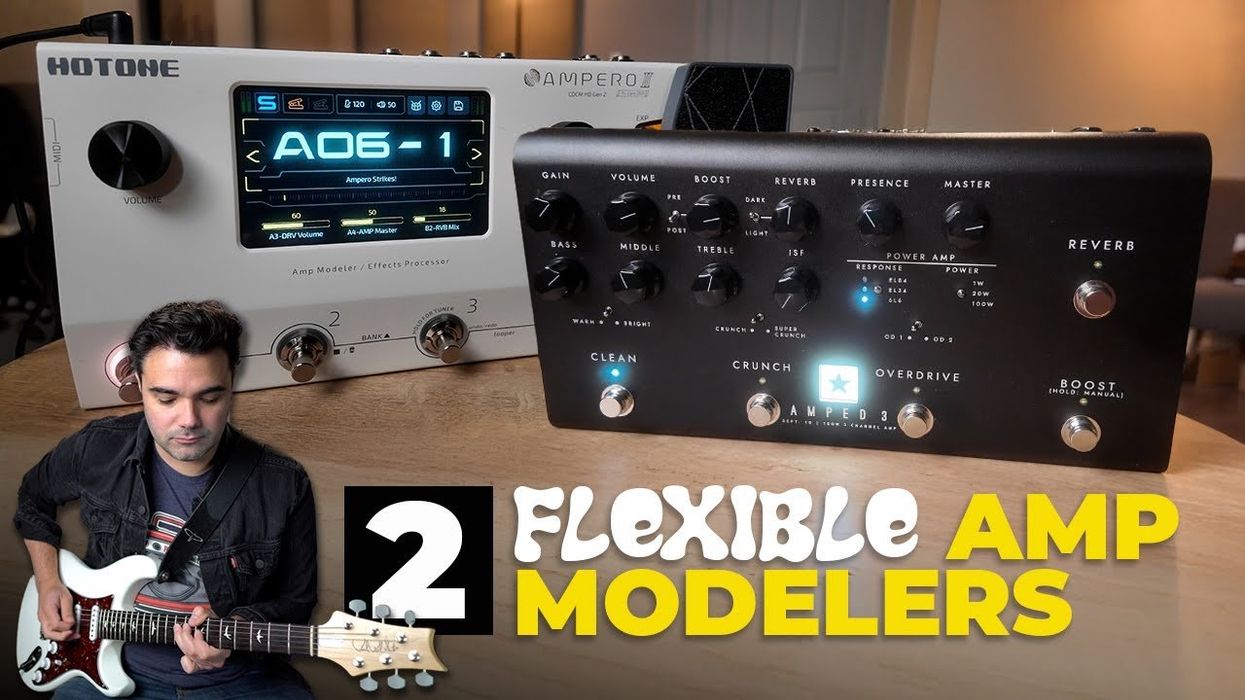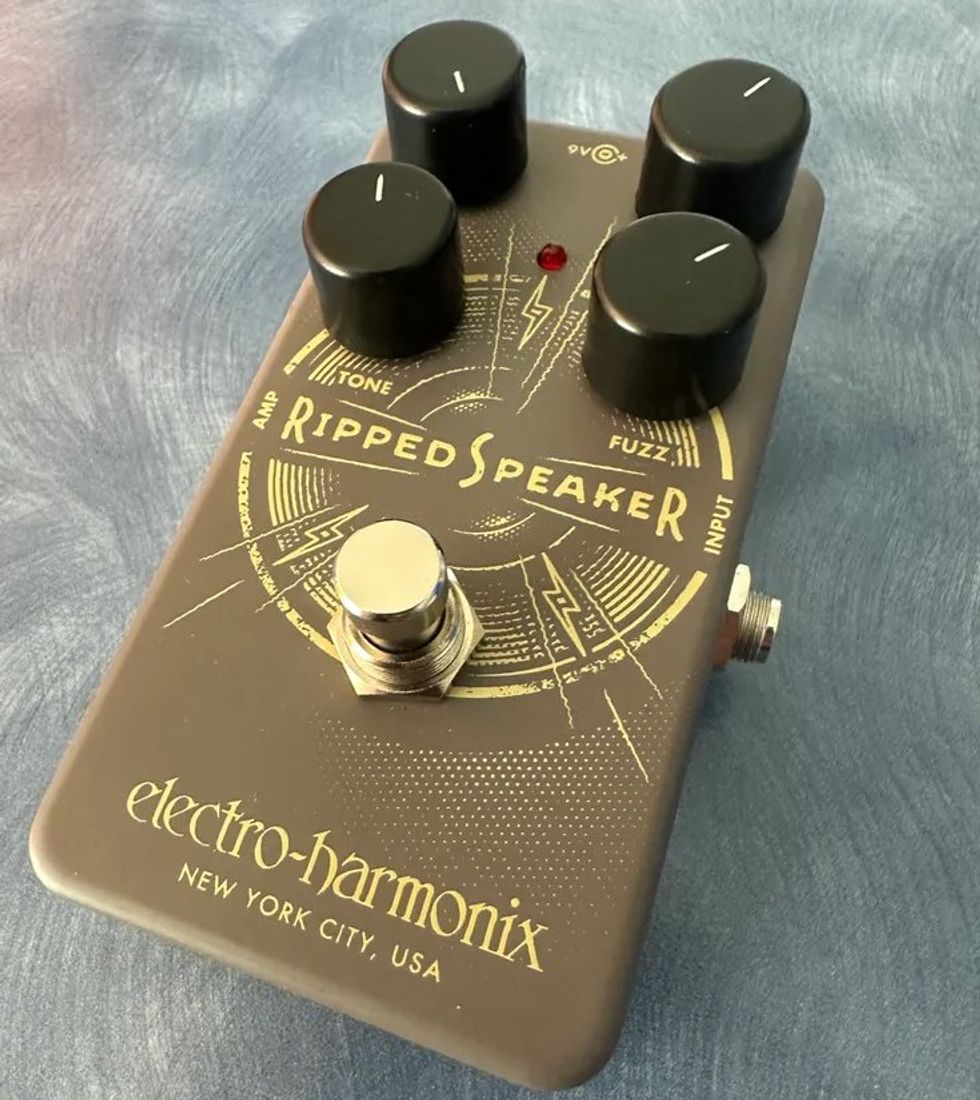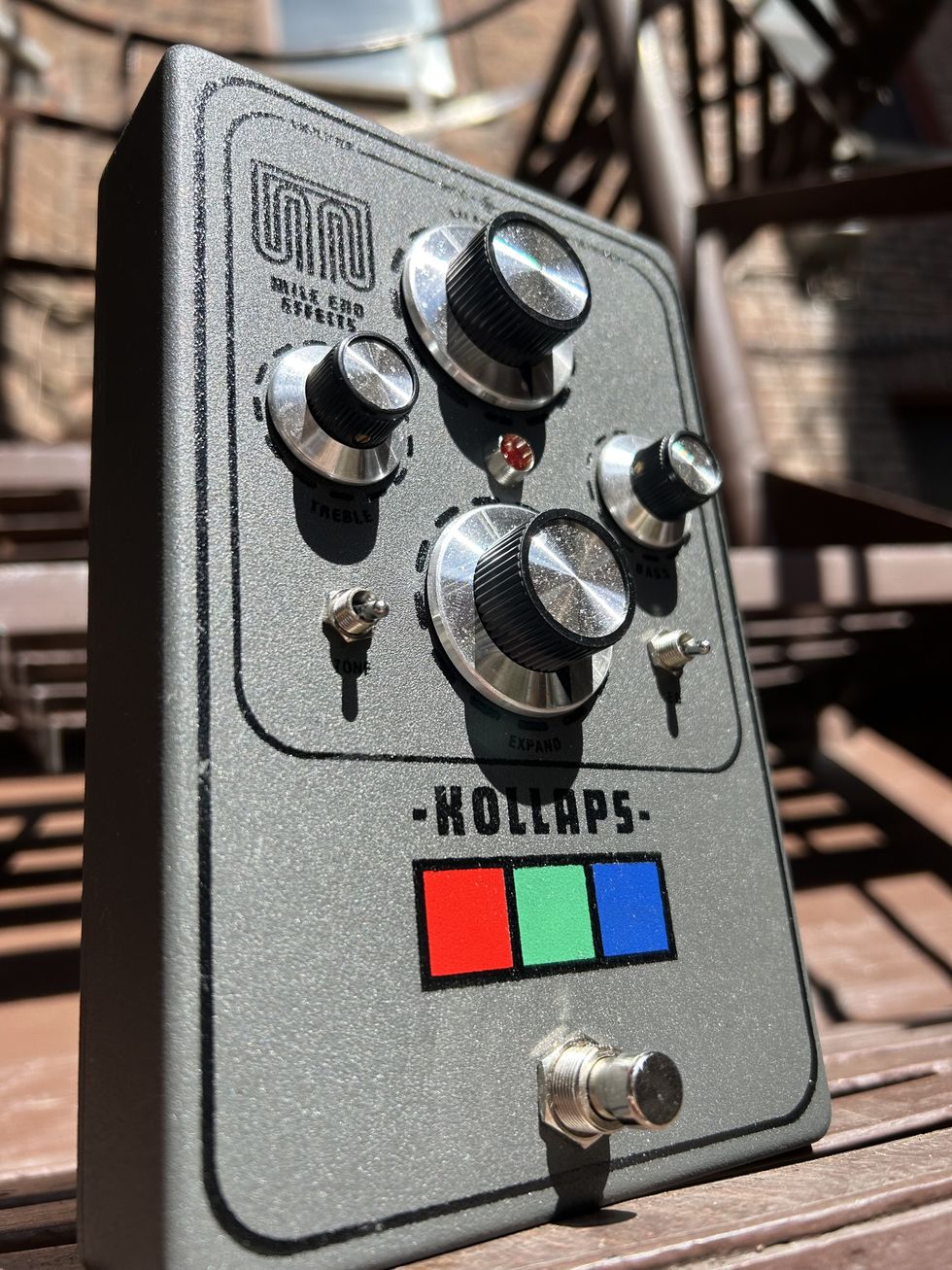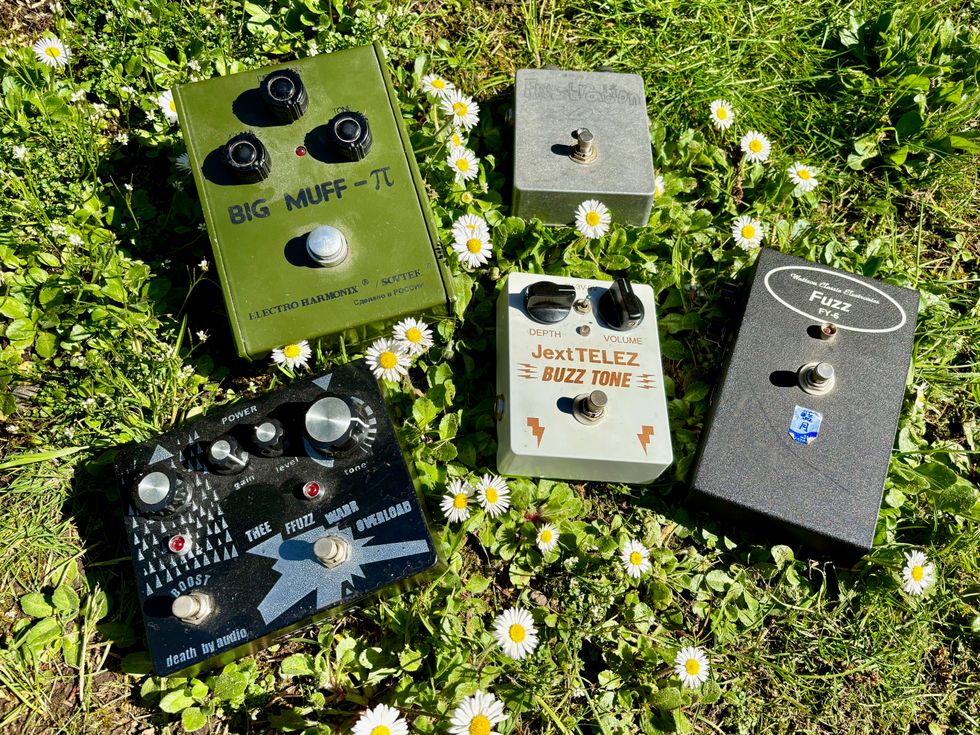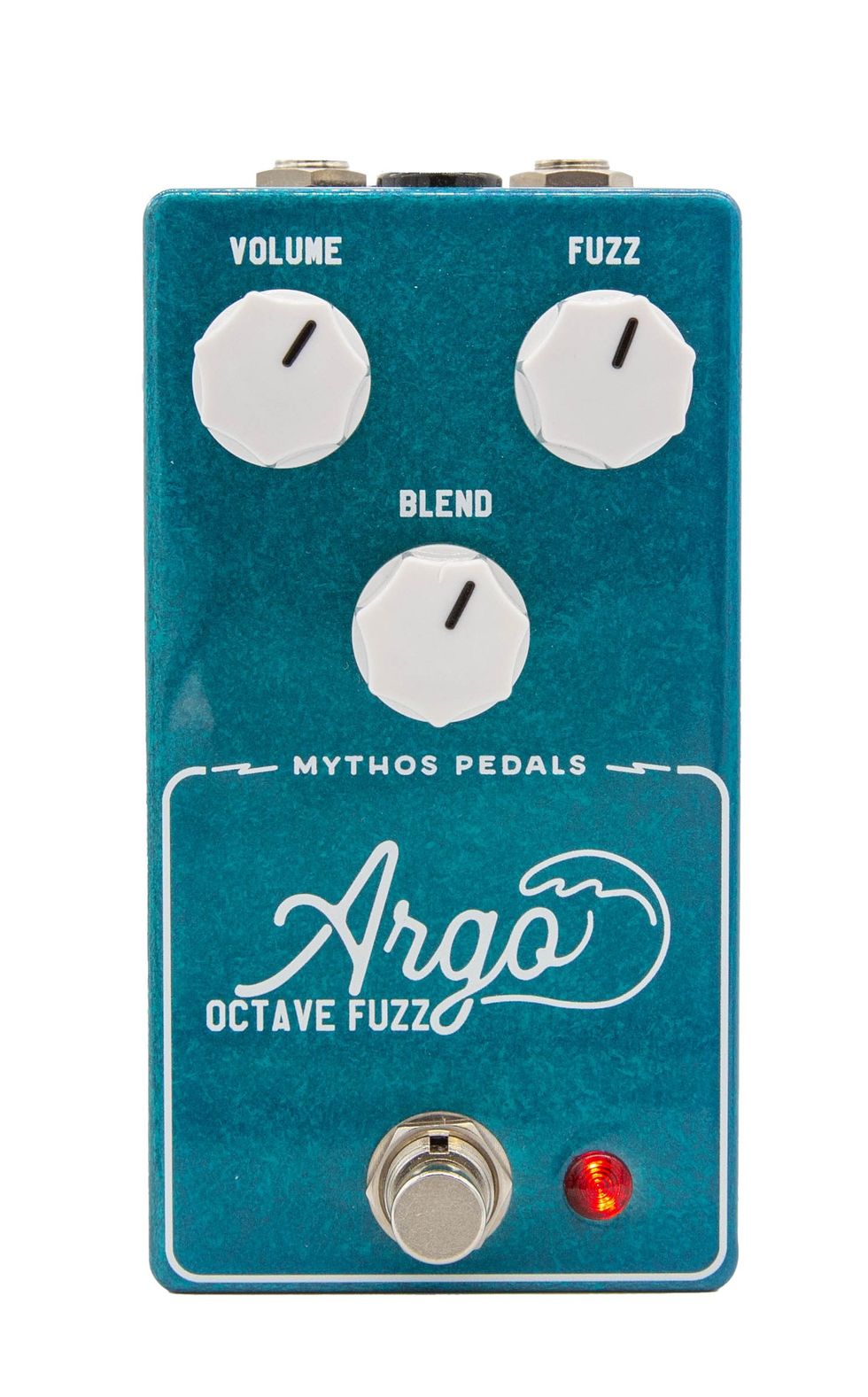Scottsdale, AZ (October 24, 2013) -- Gretsch is proud to welcome three additions to the popular Center-Block series, the Gretsch G5620T-CB Electromatic, G5655T-CB Electromatic, and G5622T-CB Electromatic guitars. The new models join three previously released guitars, launched in Jan. 2013, targeted at guitarists looking for an alternative instrument that combines the infamous Gretsch aesthetic, increased sustain and reduced feedback, even at high volumes.
Available in Black, Rosa Red, and Georgia Green gloss finishes, all models offer the “center-block advantage.” The interior solid spruce center block running the length of the guitar’s body makes for a lively “high gain-friendly” tone and delivers greater control over the kind of feedback players want. The three new dual coil Super HiLo’Tron™ pickups are voiced to produce a clean, high-end sparkle with robust low-end, low-noise performance, along with versatile pickup switching. Together with the “Black Top” Filter’Tron™ bridge pickup, it’s a potent tonal combination.
The single-cutaway G5620T-CB Electromatic Center-Block features a five-ply maple body construction with a bound arched top and back, bound “cat’s eye” sound holes and a bound maple neck. The G5620T-CB also has a 12.5”-radius rosewood fingerboard with 22 medium jumbo frets and Neo-Classic™ “thumbnail” inlays, three-way pickup switching, single-ply black pickguard with Gretsch logo, five “G-arrow” control knobs (volume for each pickup, tone for each pickup, master volume), anchored Adjusto-Matic™ bridge and flat-handle Bigsby-licensed B70 vibrato, Grover® tuners and knurled strap retainer knobs.
The Double-Jet G5655T-CB Electromatic Center-Block offers afive-ply maple body construction with a bound arched top and back, a bound maple neck and a 12.5”-radius rosewood fingerboard with 22 medium jumbo frets and Neo-Classic “thumbnail” inlays. The G5655TCB also has three-way pickup switching, single-ply black pickguard with Gretsch logo, four “G-arrow” control knobs (volume for each pickup, bridge-pickup-only tone, master volume), anchored Adjusto-Matic™ bridge and flat-handle Bigsby®-licensed B50 vibrato, Grover tuners and knurled strap retainer knobs.
The double-cutaway G5622T-CB Electromatic Center-Block includes a five-ply maple body construction with a bound arched top and back, bound “cat’s eye” sound holes and a bound maple neck, a 12.5”-radius rosewood fingerboard with 21 medium jumbo frets and Neo-Classic™ “thumbnail” inlays, three-way neck/bridge pickup switching with two-way auxiliary switching (middle pickup on/off), single-ply black pickguard with Gretsch logo, five “G-arrow” control knobs (volume for each pickup, master tone for bridge and middle pickups, master volume), anchored Adjusto-Matic bridge and flat-handle Bigsby-licensed B70 vibrato, Grover tuners and knurled strap retainer knobs.
Watch the company's video demo:
For more information:
Gretsch


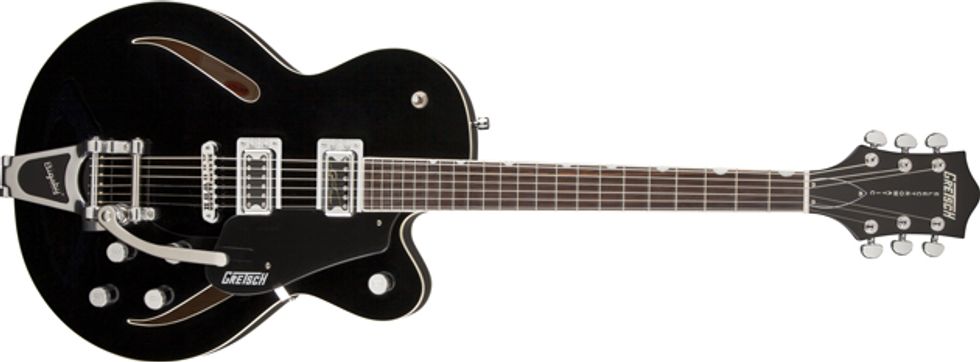
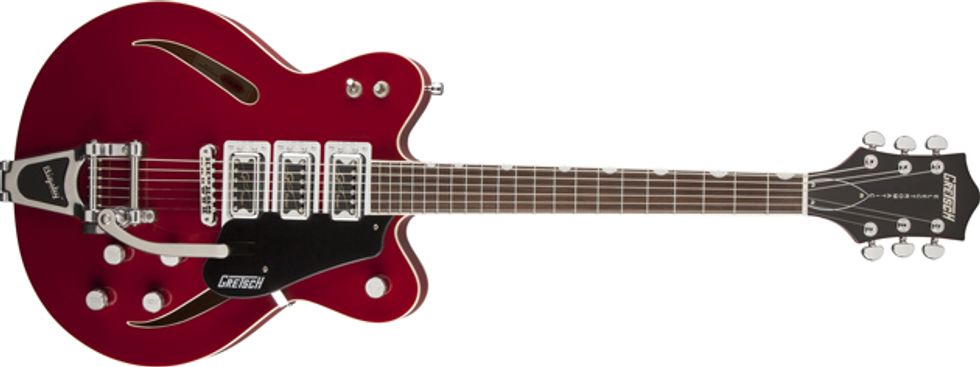

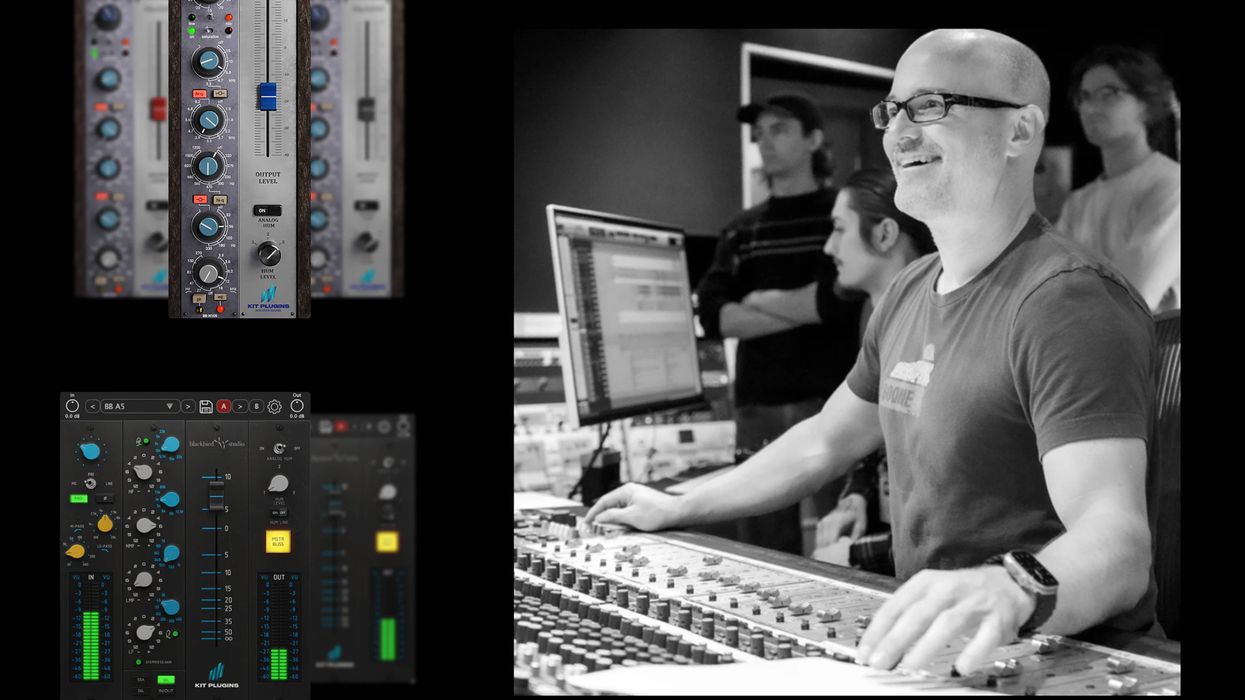
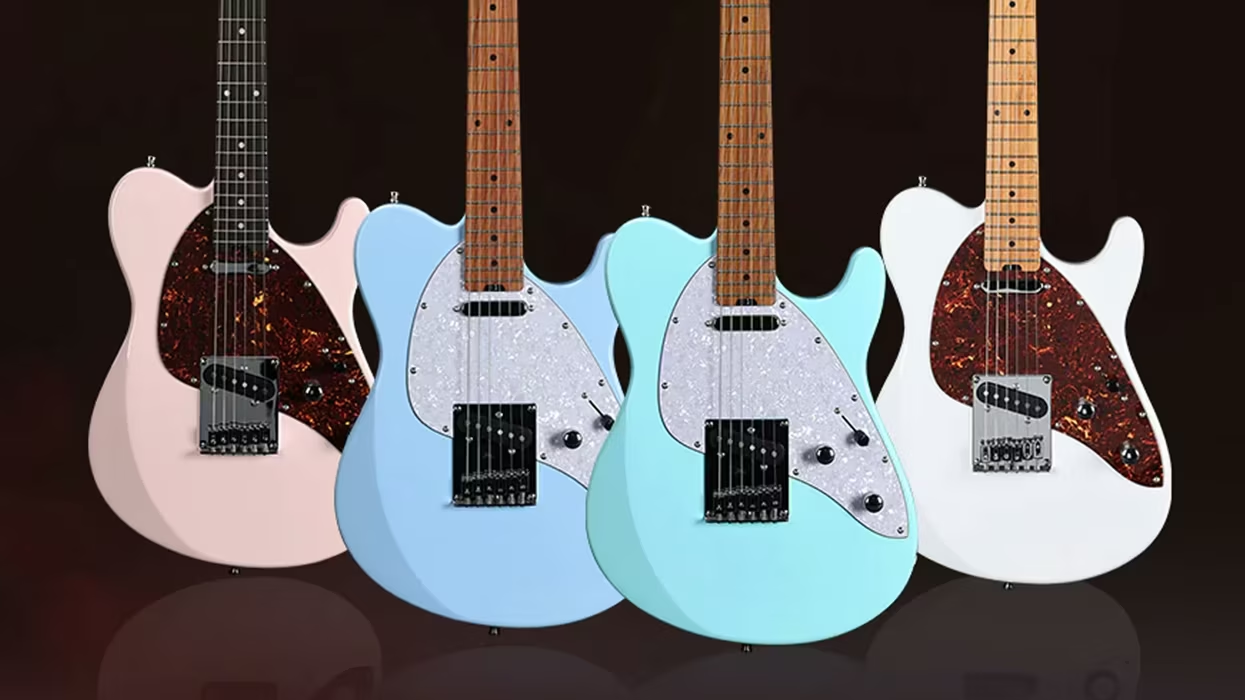

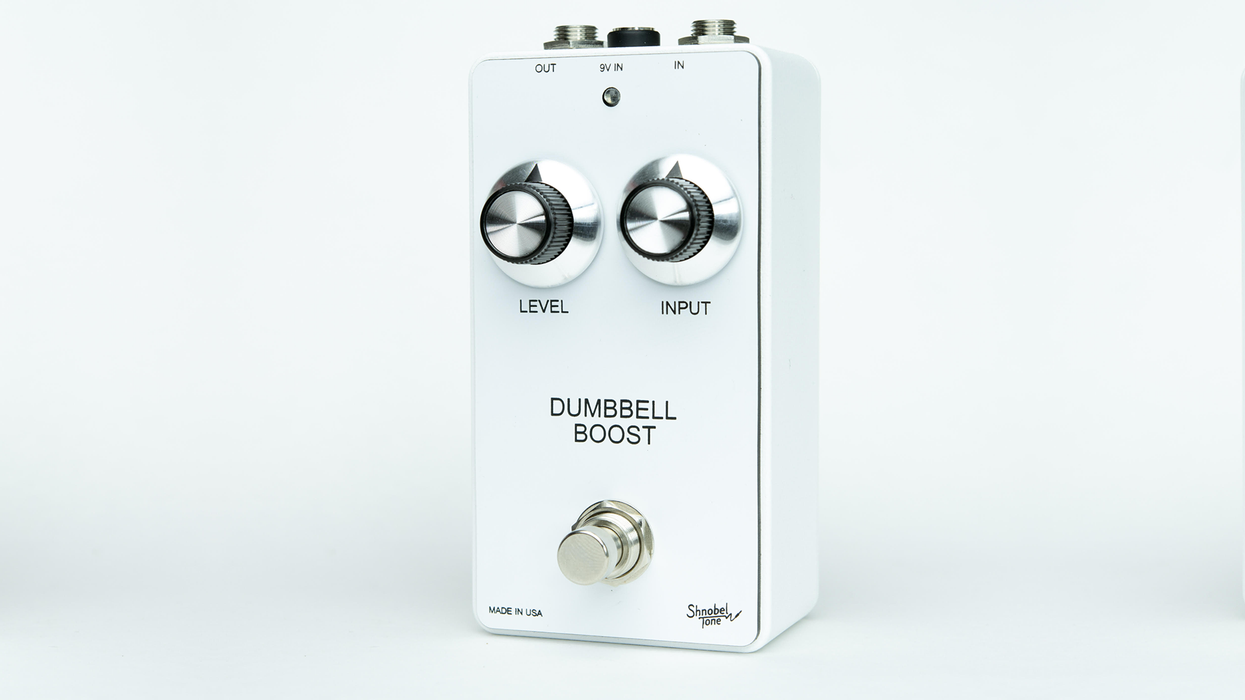

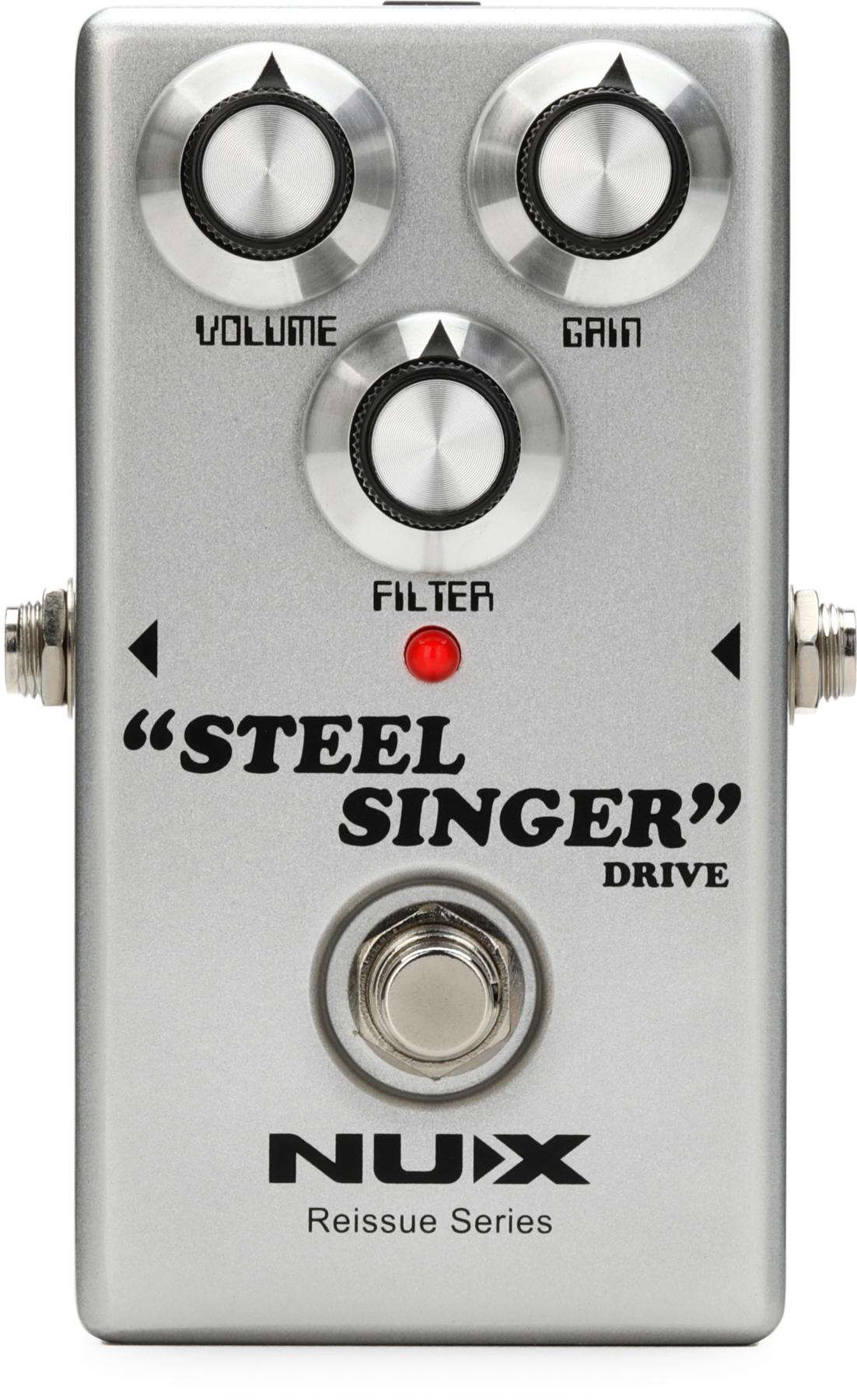


![Rig Rundown: Russian Circles’ Mike Sullivan [2025]](https://www.premierguitar.com/media-library/youtube.jpg?id=62303631&width=1245&height=700&quality=70&coordinates=0%2C0%2C0%2C0)


